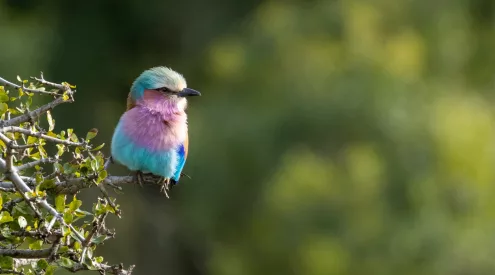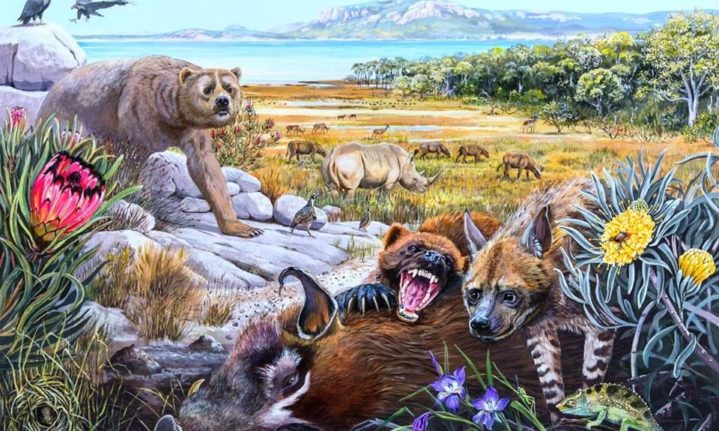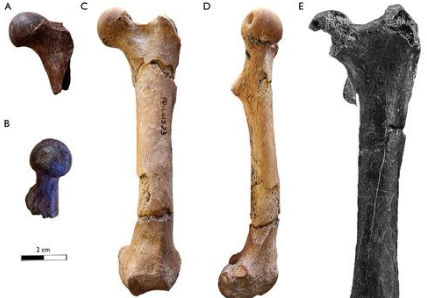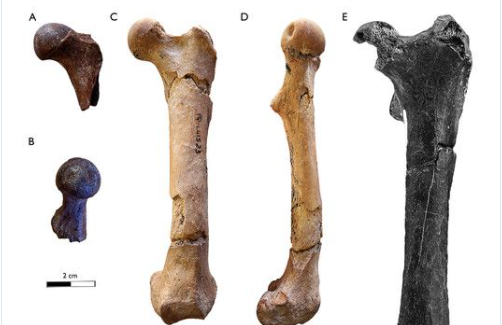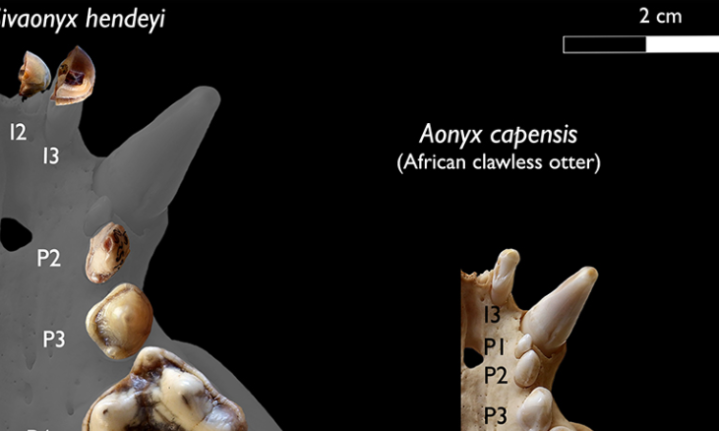Scientists at the University of Cape Town (UCT) recently discovered remains of otters and wolverines, believed to date back 5 million years. The discovery was made in the Langebaanweg Fossil Park on the West Coast.
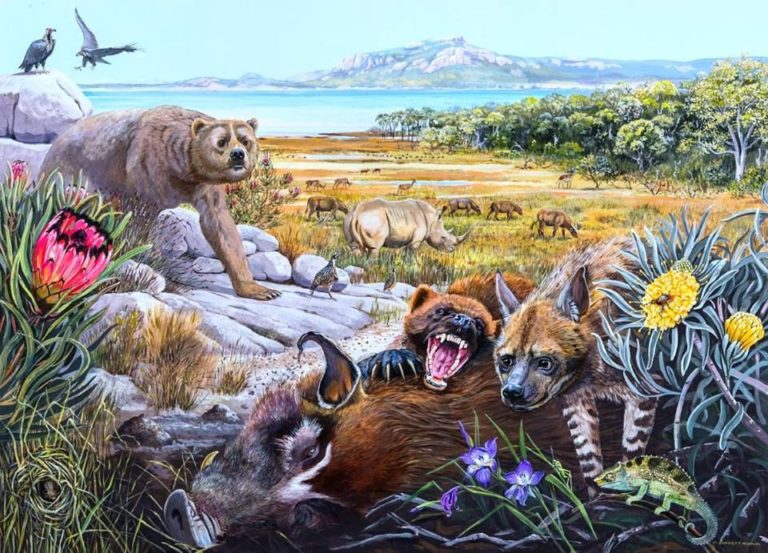
What South Africa’s West Coast might have looked like 5 million years ago. In the foreground, a giant wolverine feeds on a pig while chasing away a primitive hyaena. Image credit: Maggie Newman, Geological Society of South Africa and the University of the Witwatersrand.
‘Over 5 million years ago, wolf-sized otters and leopard-sized relatives of living wolverines (members of the weasel family that look more like badgers than wolves) lived along the West Coast of South Africa. This is according to recent discoveries by scientists at the UCT and Iziko Museums of SA,’ UCT said in a statement.
Just published in #PeerJ – New insights into the giant mustelids (Mammalia, Carnivora, Mustelidae) from Langebaanweg fossil site (West Coast Fossil Park, South Africa, early Pliocene) https://t.co/5VkdnPaFKY#evolutionarystudies #paleontology pic.twitter.com/3feL0t7yLB
— PeerJ — Life and Environment Journal (@thePeerJ) June 1, 2020
These mustelids (the family that includes weasels, otters and badgers among others) were much larger than the sea otters we know today, and the information gathered through this unearthing led to much insight into the giant otter (Sivaonyx hendeyi) and wolverine (Plesiogulo aff Monspesulanus) that inhabited the West Coast.
‘This group of giant otters are all extinct, and their new fossils enable us to unravel their biology and evolutionary relationships,’ said Dr Alberto Valenciano on UCT’s website.
Dr Romala Govender from Iziko Museums of South Africa, who is co-author of the study, added that ‘This conclusion brings to the fore the need for new and detailed studies of Langebaanweg fauna housed at Iziko in the Cenozoic Collections. These studies will not only give us insight into the fauna that lived along the West Coast 5 million years ago but will also allow us to study and understand the faunal change that has occurred [since then].’
The full study was published here.
Image credit: Tiwtter/PeerJ






